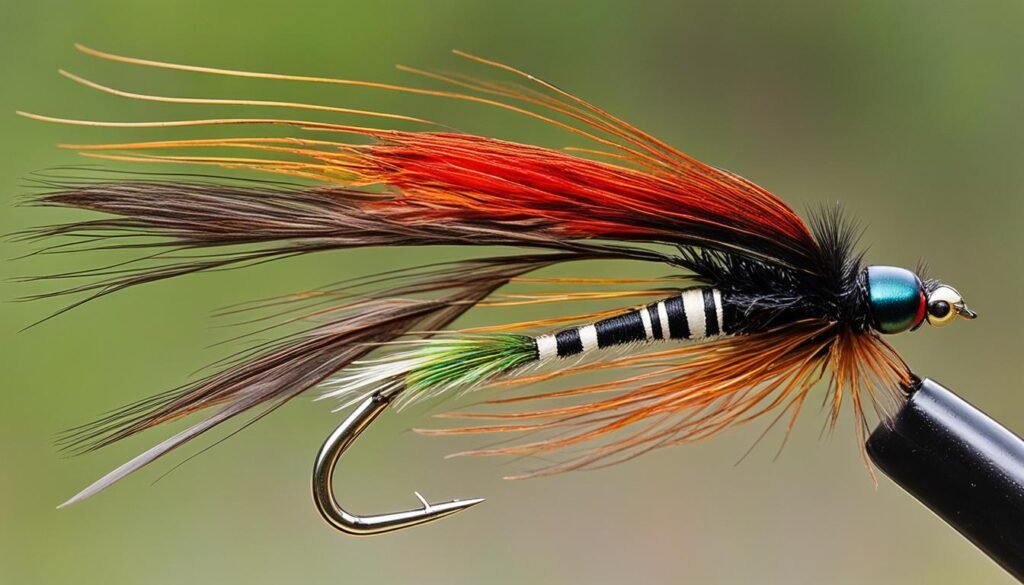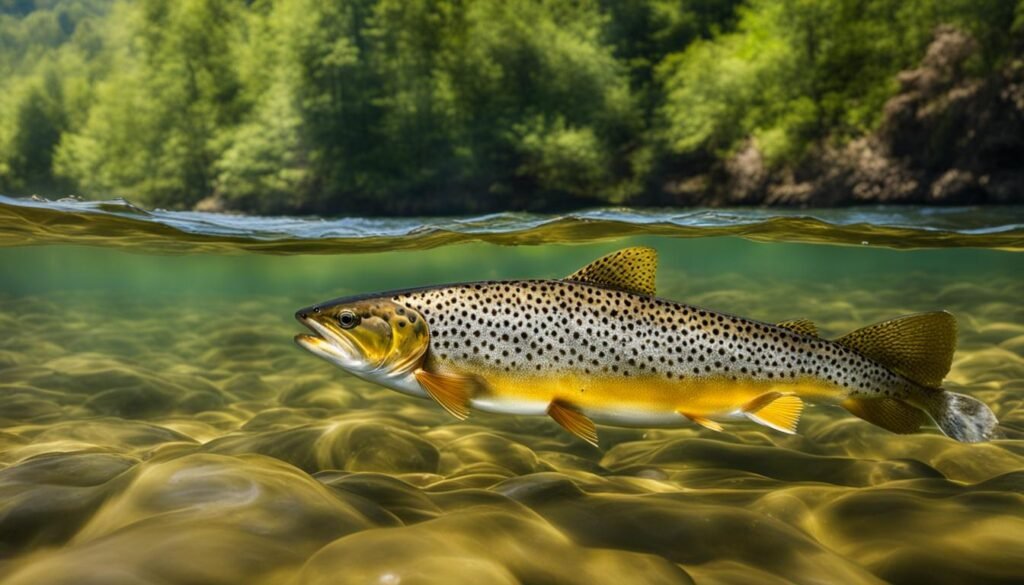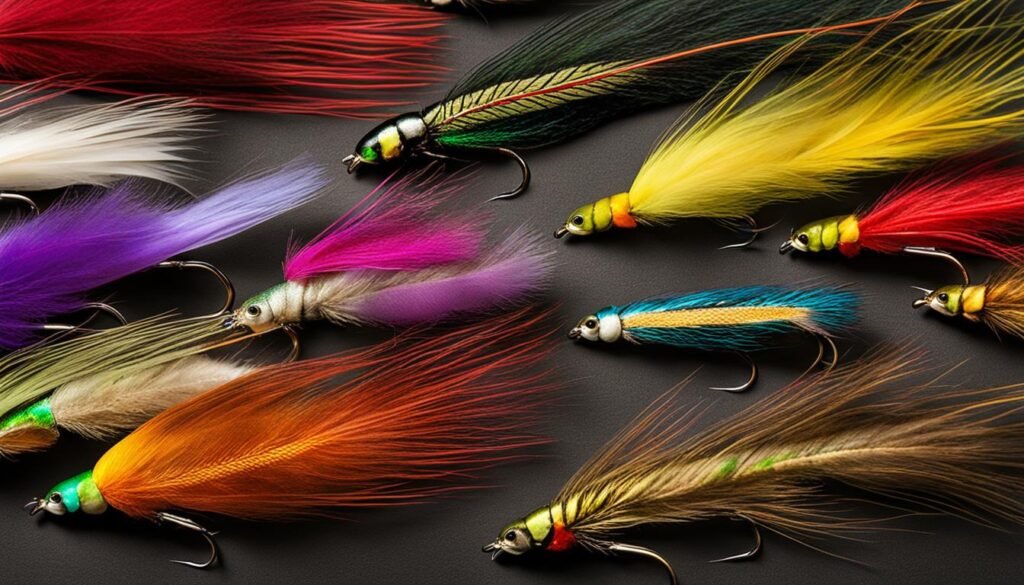When it comes to fly fishing for trout, having the right flies can greatly increase your chances of success. While there isn’t a one-size-fits-all fly that works in every situation, there are several patterns that have proven to be consistently effective. In this article, we’ll explore the best trout flies based on expert recommendations and experience.
Understanding Fly Choice for Trout
Fly choice is a crucial aspect of trout fishing, as it can greatly affect your chances of success on the water. When selecting flies for trout, there are several factors to consider. First and foremost is the location. Is it a river, lake, or stream? Each body of water may have different insect populations, and matching the hatch is essential for fooling trout into biting.
The next consideration is the current conditions. Is the water clear or cloudy? Is there a hatch happening or are the trout feeding on subsurface insects? The answers to these questions will determine whether you should choose dry flies, nymphs, or streamers. Additionally, it’s important to take note of the weather, as it can impact insect activity and trout behavior.
Factors to Consider for Fly Choice:
- Location (river, lake, stream)
- Water conditions (clear, cloudy)
- Hatch activity (dry flies, nymphs, streamers)
- Weather (temperature, wind)
- Trout behavior (feeding near the surface or subsurface)
Lastly, your personal preference as an angler should be taken into account. Some fly fishers have their go-to patterns that they have had success with in the past. Others enjoy experimenting with different flies and techniques. It’s important to have confidence in the flies you choose, as this mindset can positively impact your presentation and fishing experience.
Last Chance Cripple
The Last Chance Cripple is a versatile fly pattern that imitates both a crippled mayfly and an emerging mayfly. This fly has proven to be effective in mayfly hatches, as it mimics a bug that is unable to escape the water’s surface. The Last Chance Cripple is a popular choice among anglers and is often recommended for its versatility and effectiveness in various trout fishing scenarios.
What sets the Last Chance Cripple apart is its realistic appearance and lifelike movement in the water. Its delicate wings and extended body accurately mimic the vulnerable state of a struggling mayfly. The fly’s ability to hover on the surface and imitate the natural behavior of an emerging insect makes it irresistible to trout.
Mayfly Fly Pattern
The Last Chance Cripple falls under the mayfly fly pattern category due to its ability to imitate mayfly hatches. Mayflies are a common food source for trout, and understanding their life cycle can significantly improve your fly selection. When mayflies are in the emerging stage, they become more vulnerable to predation, making the Last Chance Cripple an effective choice during this time.
For visual reference and further understanding of the Last Chance Cripple, you can watch fly fishing videos that demonstrate its effectiveness in action. These videos provide insights into the proper presentation techniques and strategies for using this fly pattern.
Micro Mayfly Nymph
When it comes to trout nymph flies, the Micro Mayfly Nymph is a standout pattern that deserves a place in your fly box. This small nymph pattern closely imitates the small, dark nymphs that trout commonly feed on. It features a slim silhouette and realistic coloration, making it an irresistible treat for hungry trout.
The Micro Mayfly Nymph is particularly effective in slow-moving or clear water where trout have a chance to closely inspect their food. Its small size and lifelike appearance make it a go-to choice when trout are targeting smaller prey. Whether you’re fishing a mountain stream or a crystal-clear river, this pattern can help you fool even the most selective trout.
Micro Leech: A Versatile Stillwater Trout Streamer
When it comes to fly fishing in stillwater environments like lakes and ponds, having the right flies in your arsenal can make all the difference. One highly effective pattern that should not be overlooked is the Micro Leech. This versatile streamer fly has proven to be a go-to choice for many anglers targeting trout in stillwaters.
The Micro Leech is designed to imitate the small leeches that are abundant in stillwater ecosystems. Its realistic appearance and natural movement make it irresistible to trout. The marabou tail and slim profile of the fly create a lifelike presentation in the water, attracting the attention of hungry trout.
One of the key advantages of the Micro Leech is its versatility. It can be fished with a slow retrieve, allowing the marabou to flutter and create a realistic movement. This makes it an excellent choice for targeting both actively feeding trout and those that are more sluggish. The fly can also be paired with a chironomid beneath an indicator, adding another level of attraction for trout.
Why Choose the Micro Leech?
- The Micro Leech is a proven stillwater fishing fly that consistently produces results.
- Its realistic appearance and natural movement make it an irresistible choice for trout.
- The versatility of the Micro Leech allows it to be fished in various ways, depending on the behavior of the trout and the fishing conditions.
- Its small size and slim profile make it suitable for imitating the natural leeches found in stillwater ecosystems.
Hare’s Ear: A Versatile Nymph Pattern for Trout Fishing
If you’re an avid trout angler, you know the importance of having a variety of fly patterns in your arsenal. One pattern that should not be overlooked is the Hare’s Ear nymph. This versatile fly has gained popularity among anglers for its ability to imitate various mayflies, caddisflies, and stoneflies.
The Hare’s Ear nymph is tied with natural materials such as hare’s mask fur, which gives it a buggy appearance that trout find irresistible. The fly’s coloration closely resembles the nymphs of many aquatic insects, making it an effective choice in a wide range of fishing scenarios.
Why Choose the Hare’s Ear Nymph?
- Effective Imitation: The Hare’s Ear nymph closely imitates the nymph stage of mayflies, caddisflies, and stoneflies, which are important food sources for trout. Its lifelike appearance and natural coloration make it a go-to choice for fooling selective trout.
- Versatility: The Hare’s Ear nymph can be tied in various sizes and weights, allowing you to match the hatch and fish it in different water conditions. Whether you’re fishing fast-flowing rivers or slow-moving streams, this fly pattern can be adjusted to suit the situation.
- Presentation: The Hare’s Ear nymph sinks quickly, making it ideal for reaching deeper water where trout often hold. Its weight and natural movement in the water attract the attention of feeding trout, enticing them to strike.
Foam Bodied Elk Hair Caddis
The Foam Bodied Elk Hair Caddis is a durable dry fly that is highly effective for trout fishing. This fly features a foam body that keeps it floating high on the water’s surface, making it visible and enticing to feeding trout. The elk hair wings provide natural movement and create a realistic silhouette that mimics the size and shape of common bugs seen by trout.
One of the advantages of the Foam Bodied Elk Hair Caddis is its ability to withstand multiple fish strikes without losing its buoyancy. Unlike traditional dry flies that require constant reapplication of fly floatant, this pattern requires minimal maintenance, allowing you to spend more time focused on fishing rather than fly maintenance.
When fishing with the Foam Bodied Elk Hair Caddis, it’s important to present the fly in a natural manner. This can be achieved by making accurate casts and allowing the fly to drift naturally with the current. The buoyancy of the foam body allows the fly to ride high and dry, imitating an insect sitting on the water’s surface.
Foam Bodied Elk Hair Caddis Tips:
- Use the appropriate size of Foam Bodied Elk Hair Caddis to match the size of the insects present in the water.
- Apply fly floatant to the elk hair wings to ensure they stay on the surface and maintain their buoyancy.
- Experiment with different colors of foam bodies to imitate various insects, such as caddisflies, stoneflies, or grasshoppers.
- When fish are actively feeding on the surface, consider using a dry fly floatant powder to keep the fly riding high and visible.
Durrant Family Special: A Versatile Attractor and Stimulator Fly Pattern

The Durrant Family Special is a unique and versatile fly pattern that has gained popularity among trout anglers. This attractor fly pattern combines elements of both mayfly and caddisfly imitations, making it an effective choice in various fishing scenarios. Whether you’re targeting trout during a mayfly or caddisfly hatch, the Durrant Family Special can be a go-to pattern.
One of the key features of the Durrant Family Special is its ability to attract trout by imitating multiple insect species. The fly’s design incorporates characteristics that mimic the natural movement and appearance of both mayflies and caddisflies. This makes it an effective attractor pattern that can elicit strikes from trout, even when they may not be actively feeding on specific insects.
Additionally, the Durrant Family Special can function as a stimulator pattern. The fly’s buoyant construction and lively presentation on the water’s surface can provoke aggressive strikes from trout. This makes it a great choice for enticing fish during topwater feeding activity and for creating enticing commotion that can attract trout from a distance.
Key Features of the Durrant Family Special:
- Combines elements of mayfly and caddisfly imitations
- Versatile attractor fly pattern
- Can mimic multiple insect species
- Effective during mayfly and caddisfly hatches
- Functions as a stimulator fly pattern
Griffiths Gnat: A Versatile Fly Pattern for Trout Fishing
If you’re looking for a reliable and versatile small fly pattern for trout fishing, look no further than the Griffiths Gnat. This tiny fly is a staple in many fly boxes and has proven to be incredibly effective in a variety of fishing scenarios. The Griffiths Gnat is designed to imitate midges and small mayflies, making it an irresistible choice for trout during midge hatches or early-season mayfly hatches.
What sets the Griffiths Gnat apart is its buggy appearance and realistic silhouette on the water. Its simple yet effective design consists of a compact body made of black or dark gray thread, a small tuft of grizzly hackle for buoyancy, and a delicate tail made of fine fibers. The fly’s small size and natural presentation make it incredibly challenging for trout to resist, even in highly selective feeding situations.
When to Use the Griffiths Gnat
The Griffiths Gnat is most effective when trout are targeting small insects on the water’s surface. It can be used during midge hatches or when trout are actively feeding on small mayflies. This fly can also be used as a trailing pattern behind a larger dry fly or as part of a dropper rig. Its versatility allows you to experiment with different techniques and presentations to find what works best in a given situation.
When fishing the Griffiths Gnat, be sure to use light tippet and approach the water with stealth. The small size of this fly requires delicate presentations and precise casts. It’s important to match the size and color of the natural insects as closely as possible to increase your chances of success.
Tips for Fishing with the Griffiths Gnat
- Use fine tippet and leader to maintain a delicate presentation.
- Focus on areas where trout are actively rising or feeding on small insects.
- Experiment with different sizes and colors of the Griffiths Gnat to match the hatch.
- Try fishing the Griffiths Gnat as part of a dropper rig or behind a larger dry fly.
- Always observe the behavior of trout and adjust your presentation accordingly.
Recommended Fly Patterns for Brown Trout

When it comes to targeting brown trout, it’s important to have the right fly patterns in your arsenal. Brown trout can be particularly selective and wary, so choosing the best flies is crucial for success. Here are some recommended fly patterns that have proven to be consistently effective for brown trout:
1. Elk Hair Caddis
The Elk Hair Caddis is a classic dry fly pattern that closely imitates adult caddisflies. It is a versatile pattern that can be fished in various sizes and colors to match the specific hatch. The Elk Hair Caddis is known for its realistic appearance and buoyancy, making it a go-to choice for brown trout feeding on the surface.
2. Woolly Bugger
The Woolly Bugger is an effective streamer pattern that imitates a variety of baitfish, leeches, and crayfish. It is a versatile pattern that can be fished with various retrieves, making it suitable for both stillwater and river fishing. The Woolly Bugger’s lifelike movement and profile make it irresistible to brown trout looking for a hearty meal.
3. Hare’s Ear
The Hare’s Ear is a versatile nymph pattern that imitates various mayflies, caddisflies, and stoneflies. It is a staple in many fly boxes and is highly recommended for brown trout fishing. The Hare’s Ear’s natural coloration and buggy appearance make it an effective pattern throughout the year.
4. Pheasant Tail Nymph
The Pheasant Tail Nymph is another versatile nymph pattern that imitates mayflies and other aquatic insects. It is known for its slender profile and realistic segmentation, which closely resembles the natural insects found in trout streams. The Pheasant Tail Nymph is a reliable pattern that consistently produces results for brown trout.
Fly Fishing Seasonality and Fly Selection
Fly fishing for trout is a dynamic pursuit that requires an understanding of seasonality and the corresponding insect hatches. Each season brings unique opportunities and challenges, influencing the behavior and feeding patterns of trout. By adapting your fly selection to match the prevailing conditions, you can significantly increase your chances of success on the water.
Best Flies for Each Season
1. Winter: During the colder months, trout are less active and tend to feed on nymphs and smaller aquatic insects. Effective fly choices include midge patterns, small stonefly nymphs, and scud imitations. Focus on slow and deep presentations to entice lethargic trout.
2. Spring: As temperatures rise, trout become more active, and insect activity increases. Dry fly fishing becomes more prevalent, with hatches of Blue-winged Olives, Caddisflies, and March Browns. Carry a selection of imitative dry flies and emergers to match the insects on the water.
3. Summer: Warm summer days bring an abundance of terrestrials, such as grasshoppers, ants, and beetles. These terrestrials often fall into the water, providing a feast for hungry trout. Pack a variety of hopper patterns, ant imitations, and beetle flies to entice feeding fish.
4. Fall: Autumn offers excellent dry fly and streamer fishing opportunities. Blue-winged Olive hatches persist, and trout become more aggressive as they prepare for winter. Streamer patterns, such as Woolly Buggers and Sculpzillas, can elicit aggressive strikes from dominant fall trout.
Trout Fly Selection Tips
1. Observe the Water: Take the time to observe the insect activity on the water. Look for rising trout, floating nymphs, or other signs of feeding behavior. This will help you determine the type and size of flies that will be most effective.
2. Match the Hatch: Try to identify the insects that are present and select fly patterns that closely resemble them. Pay attention to size, color, and silhouette to create the most realistic imitation.
3. Be Flexible: While certain fly patterns are known to be effective during specific seasons, trout behavior can vary depending on the location and fishing pressure. Don’t be afraid to experiment with different patterns and techniques to find what works best on any given day.
Key Considerations and Final Thoughts
When it comes to trout fishing, there are some key considerations to keep in mind. These tips and recommendations will help you choose the right flies and improve your fly fishing game.
Firstly, it’s essential to pay attention to the water conditions. Factors such as water clarity, temperature, and current speed can greatly influence what flies the trout are likely to be feeding on. Observing the natural insects present in the water and selecting flies that closely resemble them can significantly increase your chances of success.
Secondly, understanding trout behavior is crucial when choosing the right flies. Different trout species have varying feeding habits, so it’s important to research and learn about the specific trout you are targeting. Knowing their preferred food sources and the depth at which they feed can help you select the appropriate flies.
Lastly, don’t be afraid to experiment and adapt your fly selection. While there are recommended fly patterns, every fishing scenario is unique, and what works on one day may not work on another. Be open to trying different patterns and techniques, and be willing to switch flies if they are not producing results.

